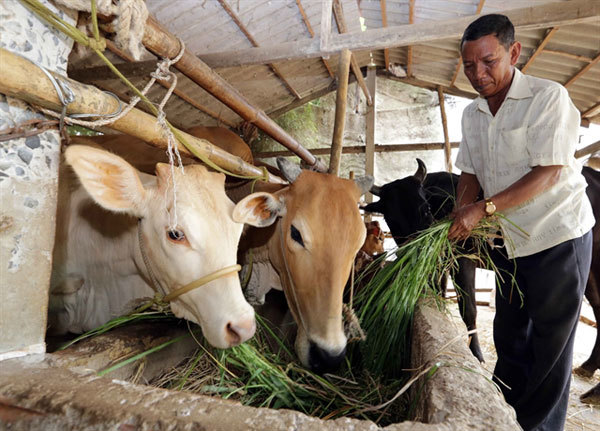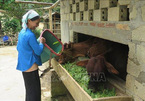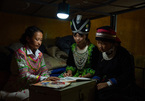 |
| A Khmer resident in Tap Son Commune, Tra Cu District, the Mekong Delta Province of Tra Vinh used the preferential loans for the poor to grow his own cow business. — VNA/VNS Photo Tran Viet |
Tra Vinh is home to over 300,000 Khmer people, or more than 31.5 per cent of the province’s population.
It is expected that by the end of 2020, the poverty rate among households will be reduced to 3.92 per cent, a decrease of 20.73 per cent compared to five years ago.
As part of the Government’s Programme 135, more than VND250 billion was spent on building infrastructure, promoting production activities, diversifying livelihoods and replicating models for poverty reduction as well as building capacity for communities and officials in special communes and hamlets.
In 2016-17, over VND20 billion was disbursed to build small water supply projects, benefiting 15,000 poor and Khmer households.
Meanwhile, under a special policy on socio-economic development support for ethnic minority areas under Decision 2085/QD-TTg, the province spent VND49 billion creating jobs, providing loans and land for housing, and implementing clean water projects.
A non-refundable grant of nearly VND30 billion sourced from the Irish Government was invested in constructing 34 rural infrastructure works.
The provincial authorities also provided support for Khmer pagodas in building crematoriums, and granted publications to local prestigious people.
By the end of 2019, Tra Vinh has only 9,214 poor households, including 5,395 Khmer families. VNS

Support policies provide leverage for ethnic people to escape poverty
Government policies and programmes on poverty reduction have changed the lives of ethnic minority people in the northern border provinces.

Lights given to encourage ethnic minority students go to school
UNESCO in Vietnam and Signify Foundation in Vietnam have provided solar lighting systems and portable solar lamps to more than 5,000 students at 16 secondary schools in remote, disadvantaged areas in three provinces